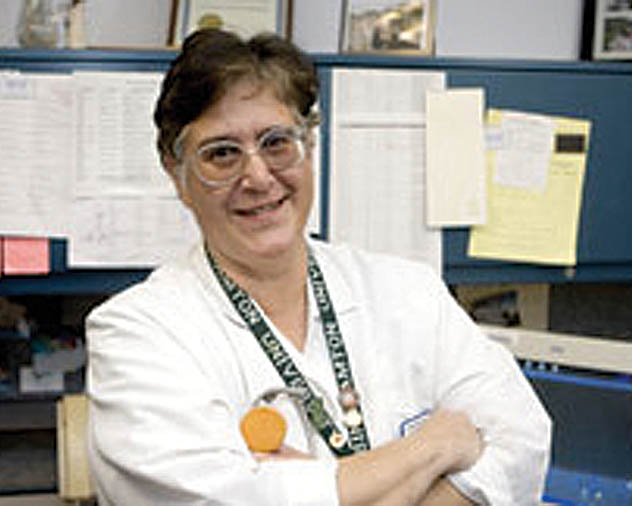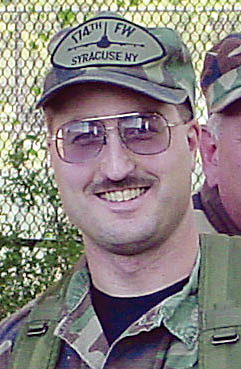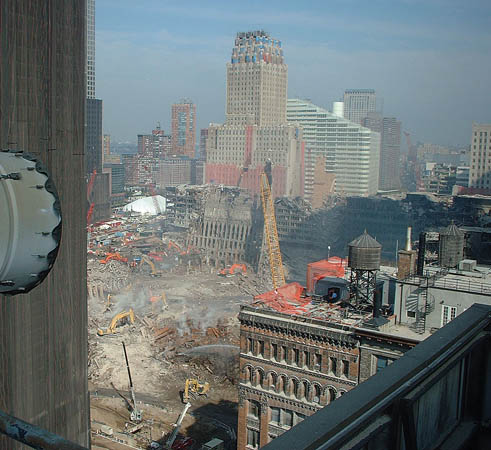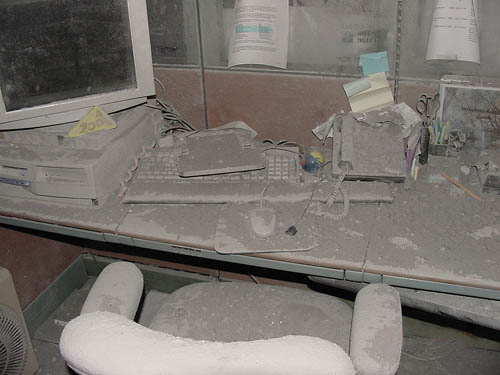|
Ten years later and the pain remains. And the images are forever etched in our minds. Images of two hijacked commercial airliners ramming the World Trade Center that sunny morning of Sept. 11, 2001. Images of grayish billowing smoke followed by the towers’ collapse, first the North, then the South. Images of thousands of disheveled, disoriented New Yorkers covered in a white soot that seemed to attach itself to everything. Images of anguish: thousands of missing person posters papered across lower Manhattan. Images of heroes aboard United Airlines Flight 93 and at the Pentagon. And the indelible image of the World Trade Center’s jagged iron skeleton jutting up from the smoldering heaps of rubble. We haven’t forgotten. We can’t forget. “How can you possibly work there and forget?” said Laura Terriquez-Kasey, a Binghamton UUPer and a member of the Metro New York 2 Disaster Medical Assistance Team that was at Ground Zero two days after the attack. “Five, 10, 20 years, it impacts you every day.” “Every time they recovered a body, everything stopped and everyone was quiet,” said David Scholl, an Upstate Medical University UUPer who was deployed to Ground Zero as a member of the New York Air National Guard 174th Fighter Wing. “It was very solemn and so quiet. All the equipment stopped. It brought tears to my eyes.” Scores of UUPers like Scholl and Terriquez-Kasey went to New York City in the aftermath of the attacks and were left forever changed by their experiences. Here are four of their stories. The worst by far Laura Terriquez-Kasey saw the havoc Hurricane Katrina wreaked with her own eyes. She’s seen destruction caused by floods, tornados and earthquakes. But nothing, nothing comes close to the total devastation caused on Sept. 11. “To this day, the odor in the air, everything that occurred is still with me,” said Terriquez-Kasey, a clinical assistant professor and a longtime emergency response nurse who’s been teaching at Binghamton University since 2000. “It’s very hard to describe to people the tremendousness of this.” Terriquez-Kasey, who joined the Metro New York 2 Disaster Medical Assistance Team just three months before the Sept. 11 attacks, was sent to Manhattan Sept. 13 to set up an emergency response unit—a triage tent at the American Express building just a half-block from Ground Zero—to assist medical staff in treating survivors.
They began providing medical and emotional care to firemen, police and construction workers as the rescue quickly turned into a recovery effort. And while her years of experience as an emergency response nurse served her well, there were times that Terriquez-Kasey couldn’t help but be overwhelmed. “The people who were responding were in total shock; it was a grieving shock,” she said. “The police officers were having a very hard time coping with what they had to deal with. And we were grieving tremendously for all the losses. There were many a time someone just sat crying on my shoulder, such a profound sadness.” Terriquez-Kasey returned to Binghamton and began developing what is now the graduate level Disaster Nursing Certificate Program—a direct result of her experiences at Ground Zero. The program is designed to better prepare emergency responders to handle emergency situations. “Disaster response and issues have changed dramatically since Sept. 11, but that’s probably the only good thing that came from (the attacks),” she said. One thing’s for sure: The sickening shock and horror she felt days after the attacks have subsided, replaced by a numbness that will never go away. “You feel it inside,” she said. “To this day, you feel it.” A horrible way to die It’s the chaos that Henry “Hank” Dondero remembers most. Dondero, a retired dentist who’s taught dentistry at SUNY Farmingdale since 1979, spent weeks in the wake of Sept. 11 volunteering with the New York City’s Medical Examiner’s Office to identify the remains of 9/11 victims. Routes to the office, at First Avenue and 30th Street, were blocked off after the attacks, which made getting there impossible without city-issued credentials and the occasional police escort. “You’d pass so many checkpoints,” Dondero said. “When you went down 30th Street at night, they had generators running lights. It was like you were at an Italian feast. But it was all business; you were there to do something.” For Dondero and dozens of other forensic dentists, their business was to examine and identify recovered remains using dental records, police and eyewitness reports, and data from companies at the Twin Towers. As part of the World Trade Center Dental ID Team, he worked eight- and 12-hour shifts in the weeks after the attacks; the dental unit ran 24 hours a day until October 2001 and closed in June 2002. Dondero, who oversaw shifts as a “tour commander,” estimated that he was responsible for about 100 of the more than 600 identifications made by the unit. It was a gruesome task, especially in the first few days after Sept. 11. “You go through a gamut of emotions,” he said. “First, you see someone so mutilated and think, ‘Look what happened to this poor S.O.B.’ The next emotion is self- serving, ‘Thank God it’s not me.’ Then you move past it and say, ‘There is someone I can help by doing this job.’ “It’s something I would have loved to have not done, but I’m glad I did it,” Dondero said. Dondero said he attends a 9/11 memorial service each year at Farmingdale. And each year, he wears the dental unit jacket issued to him by the Medical Examiner’s Office. “You can’t forget,” he said. Lost, not found He couldn’t save anyone, or help identify human remains, or carry debris from the ruins of Ground Zero. But UUPer Bruce Jackson had a camera. He also had a mission. Jackson, a University at Buffalo distinguished professor of American culture, knew that the mementos and memorials to those lost in the World Trade Center attack would soon begin to fade, victims to Mother Nature and time. They must be preserved, caught on film and kept for posterity. “It’s the stuff that disappears that often tells us about a moment in time,” said Jackson, who shot more than 1,000 photos on film while spending a few days in the city about two weeks after the attacks. “I tried to show what the survivors were doing at that point, and there were still people who were hopeful that loved ones would turn up.” Through his lens, Jackson captured the hope, sadness, grief and loss that New Yorkers at Union Square and nearby neighborhoods felt in the weeks after 9/11. He walked through Manhattan, photo-graphing the thousands of smiling faces peering from missing person posters taped to lamp posts and building walls, on bus stop shelters and fire alarm boxes in the days and weeks after the attacks. Below the photos were urgent notes hastily scrawled, silent screams from thousands of grieving family members pleading for any information on the whereabouts of loved ones who went to work on Sept. 11 and never came home. In one photo, a Superman action hero next to a small U.S. flag is perched over a sign that reads, “You are our brothers too, and we are proud of you!” A missing person poster for Judy Fernandez, who worked on the North Tower’s 104th floor is in another photo; the weatherworn poster is ripped across the woman’s face. Jackson’s photos were exhibited in October 2001 on the Mainstage Wall of the university’s Center for the Arts. They will be displayed again in 2013, when he debuts a photographic retrospective at Buffalo’s Burchfield Penney Art Center. Jackson said he’s also used the photos as teaching tools in field work and while working on documentaries with students. The photos echo the anguish felt in New York City in the weeks following Sept. 11. They’re also a constant reminder that everything is different now. “The consequences of 9/11 are far greater than I could have imagined wandering around Manhattan looking at those sad posters of missing children and mothers, and smelling that air mix of death and electrical fire,” said Jackson. “We’re a more insular country than we were in 2001,” he continued. “The added security has eroded civil liberties. And now we’re facing an astonishing budget crisis because we’ve been fighting wars on borrowed money.” New York, New York
David Scholl was wearing his U.S. Air Force camouflage uniform the first time he visited New York City. It was Sept. 12, 2001. Scholl, plumbing facilities manager at Syracuse’s Upstate Medical University, was part of the New York Air National Guard 174th Fighter Wing—which made him certain he’d get the call to help aid rescue efforts at the World Trade Center. The 174th’s original mission—to set up a base camp to treat thousands wounded in the attacks—was scrubbed when rescue teams quickly realized there were few survivors. Instead, he spent the next 10 days assigned to a security detail at and near Ground Zero. Welcome to New York. “The first night we did security near a residential area about four blocks away (from Ground Zero) and it was pitch black because there was no power in the city,” said Scholl, who retired from the 174th in 2006. “You couldn’t see anything without a flashlight.” Scholl and his security team spent a few nights sleeping under the Triborough Bridge, where the rats were the size of cats, he said, laughing. While on the job, they caught a pair of Michigan-based photographers dressed as firemen trying to sneak in to Ground Zero for a closer look, he said. “Something struck us funny about these two—the captain was very young and the firefighter was very old,” he said. “So the cops cuffed them and left them there to show anyone else who wanted to sneak in what would happen to them.” But the laughs were few and far between during those days, especially at Ground Zero, which Scholl described as a “war zone.” He was able to get a bird’s-eye view of the site from a nearby building. “What was really eerie was that you could see all the damage to the surrounding buildings,” he said. “There was a unique, putrid-type smell in the air and there was this white dust that people were covered in.” These days, Scholl said he feels a mix of pride and sadness when he thinks about 9/ 11 and his experiences at Ground Zero. “In Iraq, our soldiers are dying to protect what we started to do back then. A lot of those soldiers were kids in school in 2001, and they’re doing what my generation was doing: fighting for the flag and our freedom. And that’s a good thing.” — Michael Lisi
|
Warning: count(): Parameter must be an array or an object that implements Countable in /home/uuphos5/public_html/voicearchive/wp-includes/class-wp-comment-query.php on line 405





